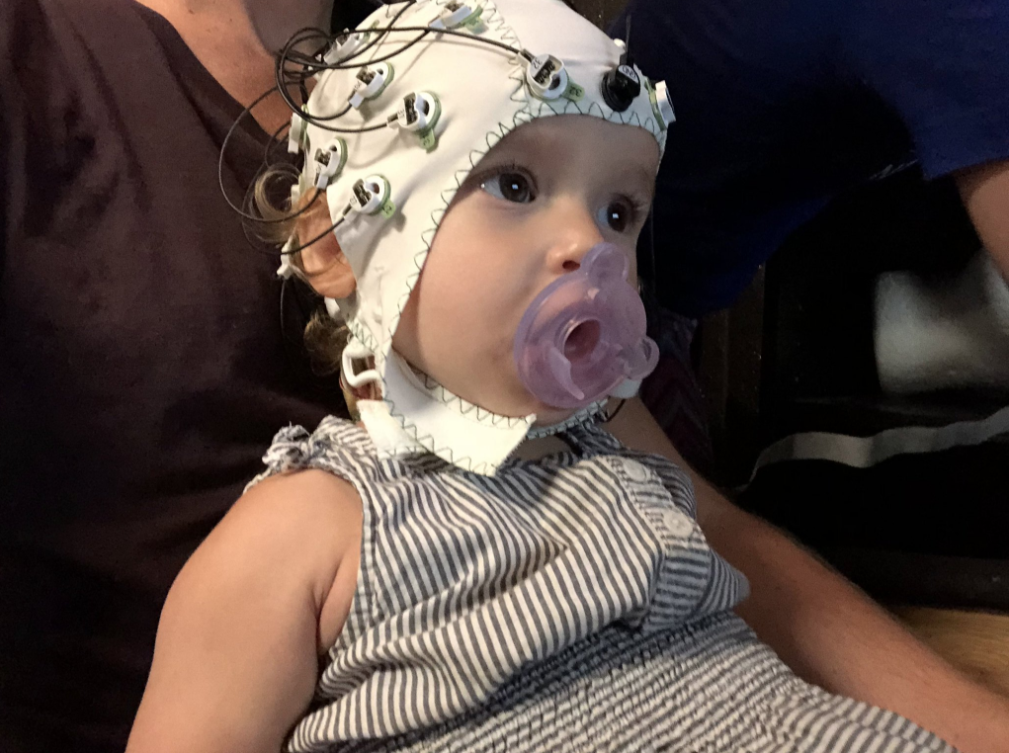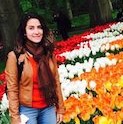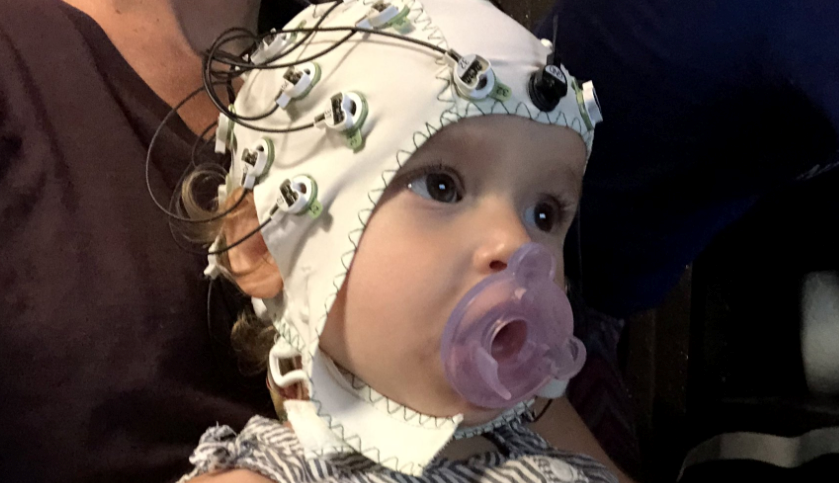Studying language through infants’ brainwaves.
How babies learn language is deeply fascinating. Many experimental methods can help us understand when and how they acquire new words. In earlier posts, we discussed using behavioral methods and observational methods.
A third type of method that is used to study word learning directly investigates how children’s (or adult’s) brains process language. This method uses a special tool with a very long name: Electroencephalogram (EEG). It measures naturally occurring electrical activity in the brain. The output look like waves, so we commonly call them brainwaves. To use this method, babies wear a cap that has many sensors that measure these brainwaves.

This method allows us to measure small changes in electrical activity that happen in response to a specific event of interest. For example, we can measure these changes in response to real words like “dog” and made up words like “neem.” In fact, previous studies measuring infants’ brainwaves have shown that infants as young as 11 months can distinguish words they know from words they don’t! (Thierry, Vihman & Roberts, 2003).
How do researchers know this?
First, researchers use a rather complicated multi-step process to be able to view infants’ brainwaves while those babies are hearing words (this involves extracting and averaging the EEG signal) . Then, researchers compare these averaged brainwave patterns between different types of words, e.g. common words like ‘shoe’ vs. unknown or made up words like ‘neem.’ Studies have shown that infants’ brainwaves for these two word-types can start being different within less than a half-second! That is really fast!
One bonus feature of measuring infants’ brainwaves using EEG, as opposed to other methods of studying language development, is that this method doesn’t require any response from the babies. EEG records their brains in reaction to these kinds of stimuli! This allows the testing of infants who may recognize and know certain words but have not begun to say them yet.
One challenge of this method is that it works best when babies are still… and babies don’t like to be still for long. Researchers help solve this problem by designing studies with redundancies, so if the baby moves around, it probably won’t mess up every instance. So, for an EEG study, babies don’t need to be still ALL the time. Overall, the benefits of measuring brainwaves with EEG often outweigh any potential difficulties. Being able to measure the brain’s fast electric response can give us important insight into how babies think and process language!
This method gives us precise information about when and how babies are processing what they hear. This can help make better theories of what happens during different stages of language learning. What kinds of things have we learned by using EEG? Here is a sampler:
- Babies can tell apart their native language from other languages at 4 months (source: Friederici, A. D., Friedrich, M., & Christophe, A. (2007). Brain responses in 4-month-old infants are already language specific. Current Biology, 17(14), 1208-1211).
- Babies rapidly learn new words at 14 months (source: Friedrich, M., & Friederici, A. D. (2008). Neurophysiological correlates of online word learning in 14-month-old infants. Neuroreport, 19(18), 1757-1761.
- Babies can detect when a words and an object don’t go together at 14 months (source: Duta, M. D., Styles, S. J., & Plunkett, K. (2012). ERP correlates of unexpected word forms in a picture–word study of infants and adults. Developmental cognitive neuroscience,2(2), 223-234.
- Babies are highly aware of what their communicative partners are experiencing (source: Forgács, B., Parise, E., Csibra, G., Gergely, G., Jacquey, L., & Gervain, J. (2019). Fourteen‐month‐old infants track the language comprehension of communicative partners. Developmental science 22(2), e12751.

Carla Fernandez
Author
Carla graduated from Penn State with a PhD in Cognitive Psychology and Language Science. She is interested in language processing differences in response to speaker variability. She is also deeply interested in the neural correlates of vocabulary acquisition in infants.
